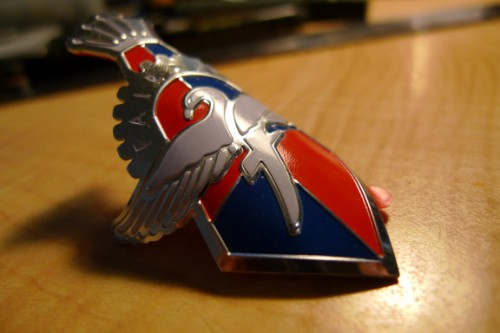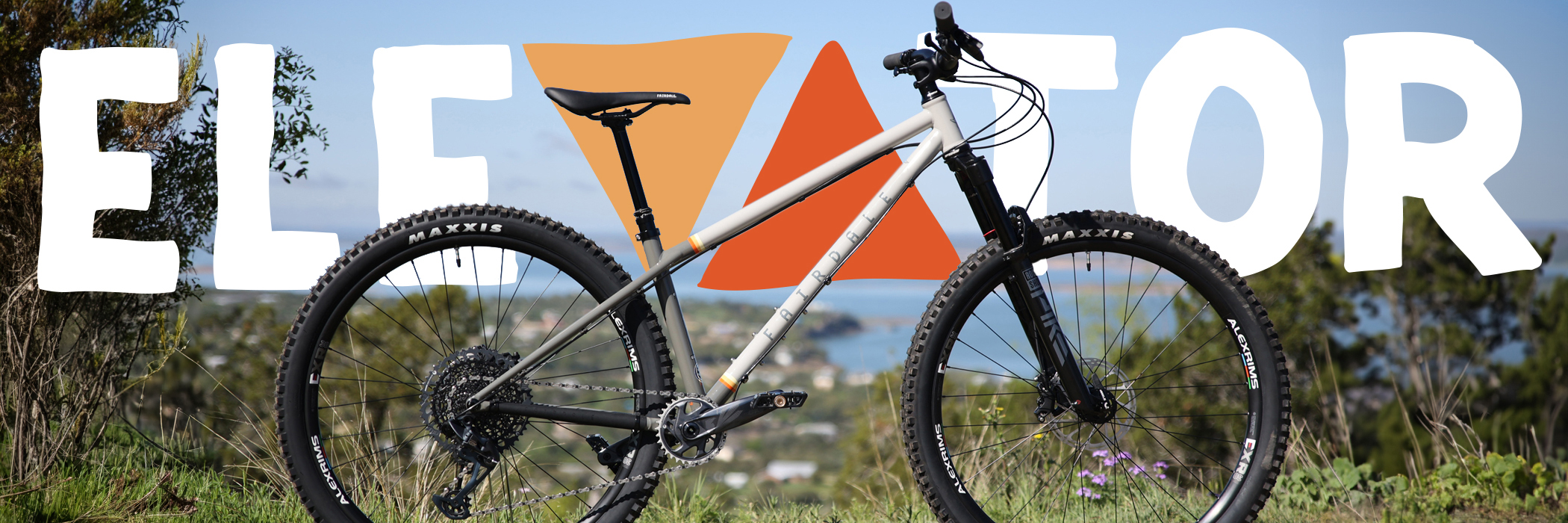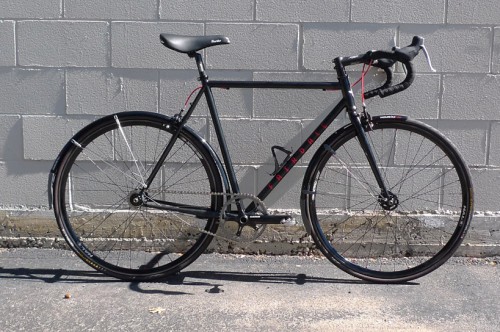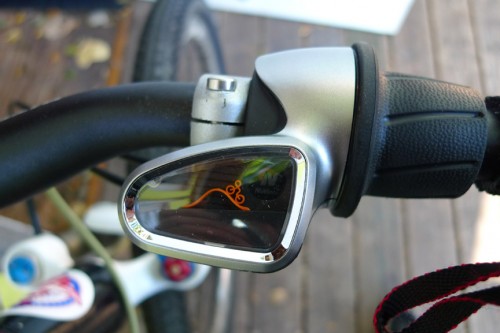Waxing on bikes
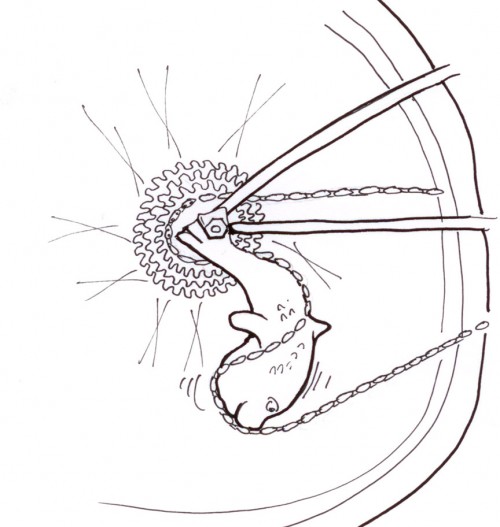
My theory is that Shimano uses their fishing reel background to create floppy wiggling fish like chain routings.
There’s no way around it, years of riding BMX have left me with a certain ignorance and fear of geared bikes. The idea of having a derailleur flopping around on the back of my bike scares the crap on me. Just seems like chain is going to pop off and all of that rattling and bouncing is just unnatural. It all just seems too fragile, and time and time again shifting systems have proven to be indeed too weak to withstand my over-tightening hit-it-with-a-hammer BMX mechanic skills.
As a result I insisted that the first Fairdale models be single speed. This was really about all my BMX brain could handle when first making the jump into big bikes. I really wanted to focus on what I knew, and also what was practical for where I live. However, lately I’ve been riding the 9 mile up hill route to work and starting to understand why people use gears. On the days I pedal up here with a rack loaded with my computer and clothes and art supplies its an aweful lot of work pushing that single speed.
 There’s just nothing better then the simplicity and durability of a single speed and I wouldn’t trade it for some cut-rate discounted shifting system. That’s really the problem I have with gears… if you buy a cheap bike with gears you are getting a really complicated shifting system made out of really cheap parts… a sure recipe for failure. If you buy a really expensive shifting system its usually just lighter and more efficient at shifting, but not necessarily sturdier. Or at least not bomb proof enough to hold up to me dropping my bike on its side and having no idea how to maintain derailleur systems. Perhaps internally geared options are the way to go? The idea of setting up a bike as a single speed but still having gears seems ideal.
There’s just nothing better then the simplicity and durability of a single speed and I wouldn’t trade it for some cut-rate discounted shifting system. That’s really the problem I have with gears… if you buy a cheap bike with gears you are getting a really complicated shifting system made out of really cheap parts… a sure recipe for failure. If you buy a really expensive shifting system its usually just lighter and more efficient at shifting, but not necessarily sturdier. Or at least not bomb proof enough to hold up to me dropping my bike on its side and having no idea how to maintain derailleur systems. Perhaps internally geared options are the way to go? The idea of setting up a bike as a single speed but still having gears seems ideal.
I’ve actually had a few and none of them have quite lived up that ideal. I salvaged an old bike by adding a 8 Speed Shimano Nexus hub and though very heavy, it worked pretty good until it gave up and failed a couple years later. I recently built a 3 speed Sram hub up for a cruiser I have and it works well, but is so tediously difficult to disconnect the cables to remove the rear wheel that I gave up on it.
There are some inherent pluses and minus to internally geared drive trains. On the upside is the user simplicity of a simple bike with a single speed like set up. No derailleur flopping around, but still some gears. The kind of bike anyone should be able to hop on an go. The downside is that there is some amount of drag/ resistance in most of the systems that robs you of some of your pedaling effort, and that if anything ever does fail inside the guts of one of those systems you don’t want to mess with it… its like taking apart a watch or something. Here’s a few I’ve been testing out…
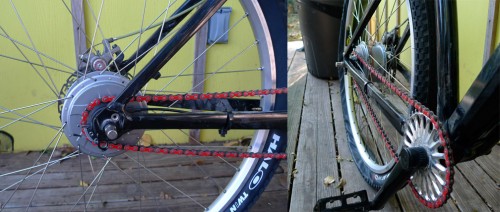
This is the Nuvinci 360n continuously veriable transmission hub. Very interesting in that it has no "gears" to speak of, just a wide range of smoothly adjustable low to high shifting.I can't get into the grip shift thing though. But I can see how it is very easy to understand for a amateur rider. Twist to make it harder or easier... couldn't be simpler.
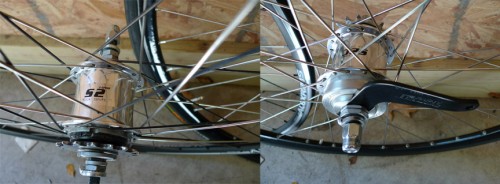
I got two Sturmey Archer 2 speed kick back hubs to test. One is a coaster brake, one freewheel. The cool thing about these hubs is that there is no need for a cable to shift, you just back pedal to shift from high to low and back to high. Very impressed with the simplicity of these hubs. You could throw one on any single speed bike and have a couple gear options. Throw the coaster version on a fixed gear bike and have both gears and brakes without any cables anywhere.
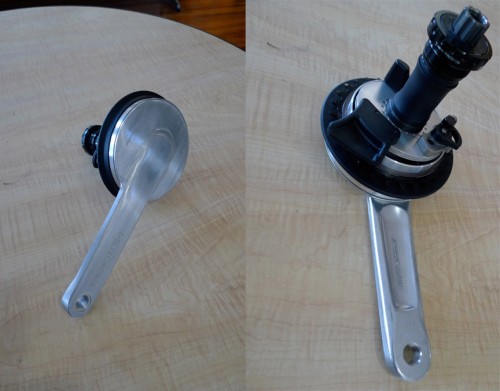
This is FSA's Metroplis internal transmission crankset. It offers two gears inside the cranks themselves and supposedly simulates having a 42tooth sprocket, and then shifts to a 28t sprocket. I haven't tried these yet because they didn't come with any instructions and I have no idea how to set them up. They will be on soon though!
I honestly hope that my big bike ignorance can be a positive thing. The overwhelming options on big bikes that confuse and confound me are probably the same types of things that would confuse your average person walking into a bike shop. Why does that bike cost $10,000! and who the hell wants to sit on that seat?!?
 With the help of my engineers and through my own testing, trial and error I learn more and more about bikes everyday. I think it will help me guide the Fairdale brand to create bicycles that are reliable and simple to use. I’ve been spending a lot of time weeding through the options and working to understand the reasons why bikes are the way they are. Its been extremely educational and unendingly interesting to me.
With the help of my engineers and through my own testing, trial and error I learn more and more about bikes everyday. I think it will help me guide the Fairdale brand to create bicycles that are reliable and simple to use. I’ve been spending a lot of time weeding through the options and working to understand the reasons why bikes are the way they are. Its been extremely educational and unendingly interesting to me.
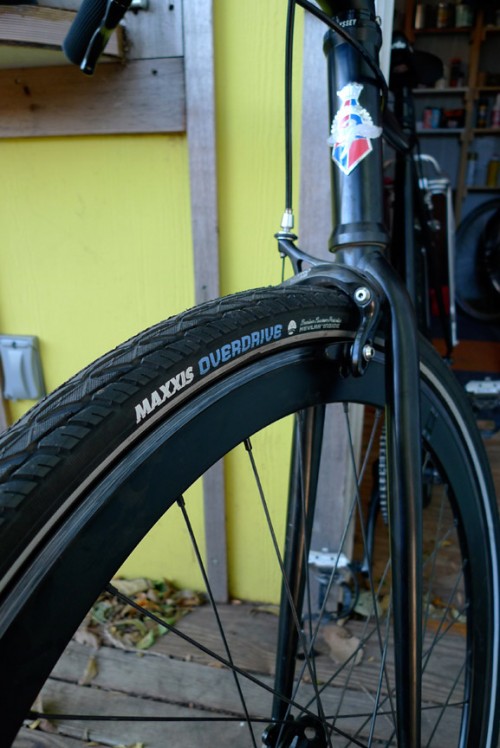
I managed to just barely squeeze some 40mm wide tires into my Fairdale sample bike. Of course, they only really measure in at 35mm but they say 40mm on the sidewall. Its interesting how much rolling resistance I can feel with the wider tire. However, its a much more cushioney ride during my night rides home when I can't see the bumps and potholes I'm about to run into. There's always some kind of give and take with these things. In this case increased tire width greatly effects rolling resistance and somewhat increases ride comfort.
In the meantime, our first bike will be the straight forward single speed road bike, The Fairdale Parser It will be entering production stages very soon and should be available in spring time!
